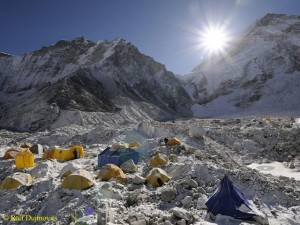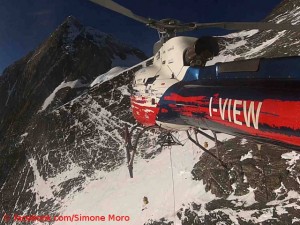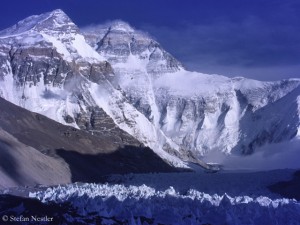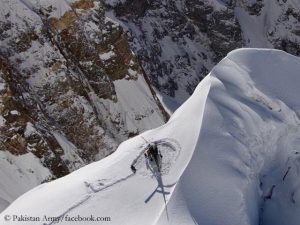Everest boycott or going on?
One crisis meeting leads to another, at Everest basecamp at 5300 meters as well as at the seat of the Nepalese government in Kathmandu. It is still unclear whether there will be attempts to climb the highest mountain in the world via the Nepalese south side this spring. “Most teams are leaving the basecamp. They are afraid that something will happen (many avalanches are still coming down), but also that other Sherpas could punish them for going on”, German reporter Juliane Moecklinghoff, who accompanies the blind Austrian climber Andy Holzer, writes in her Everest diary. “There have been several meetings among the various team leaders, Sirdars and Sherpas but it remains unclear what the final decision will be”, reports Eric Simonson of the expedition organizer International Mountain Guides (IMG). Since the avalanche in the Khumbu Icefall last Friday killed 16 Nepalis, all mountain activities have been resting.
Fear of financial hardship
There are also discussions among the Sherpas about what to do. “The majority would rather not return to the mountain as there is an overwhelming sadness at the loss of so many members from their close knit community, and this is the sentiment expressed vocally at mass meetings by the younger sherpas”, writes David Hamilton, expedition leader of the British Jagged Globe team. “The older Sherpas are aware that without the wages from the Spring Everest season many of the climbing sherpas will experience financial hardship in the year ahead.” High porters can earn about US $ 5,000 in a climbing season on Mount Everest, Climbing Sherpas, who lead their clients to the 8,850-meter-high summit and get an extra bonus, even up to $ 10,000.
Some demands satisfied
“All climbing activities will surely resume in a day or two”, said Madhu Sudhan Burlakoti, Joint Secretary of the Nepalese Ministry of Tourism and Civil Aviation, trying to spread optimism. The government has now satisfied some demands of the Sherpas. So it announced to set up a relief fund for victims of mountain accidents and their families, for which a part of the climbing royalties shall be used. In addition, the insurance payout for those killed on the mountain shall be increased from a million to 1.5 million rupees (about 15,000 $).
Transport flights with helicopters?
This is obviously not enough for the Sherpas at basecamp. The government announced to send a high-level delegation to Everest for negotiations on Thursday. The Tourism ministry has decided to reconsider its stance on not to let helicopters land above the basecamp for transport. So far, only rescue flights are allowed. The Nepalese, who were buried by the avalanche, had been carrying material and food for the Western climbers to the high camps. But even without their heavy loads they would have had probably hardly a chance to escape the deadly ice. “The mountain has been deteriorating rapidly the past three years due global warming, and the breakdown in the Khumbu Icefall is dramatic, especially at the upper icefall”, reports Tim Rippel from Peak Freaks Expeditions. “Each day we sit and listen to the groaning and crashing of the glacier. Political grievances aside, we are not here to kill people.”









